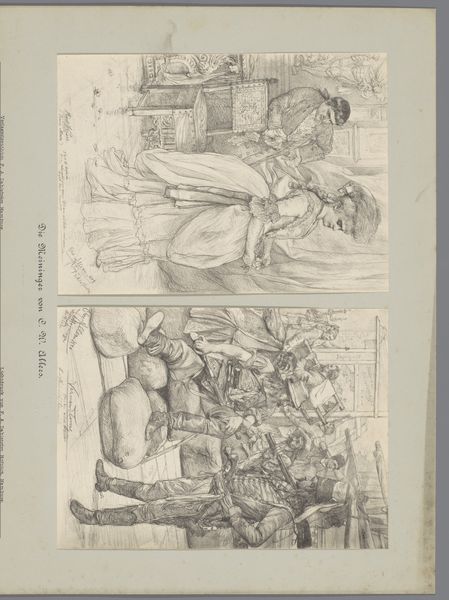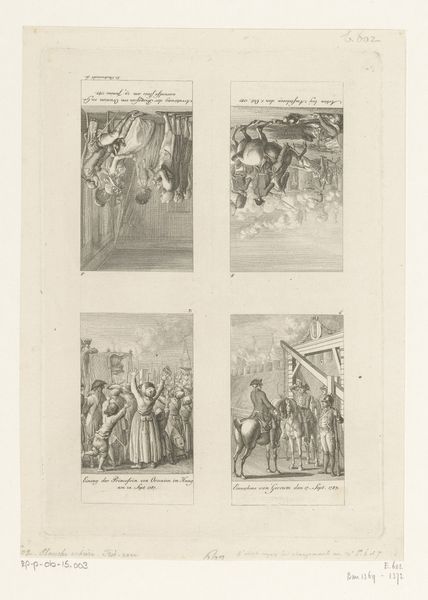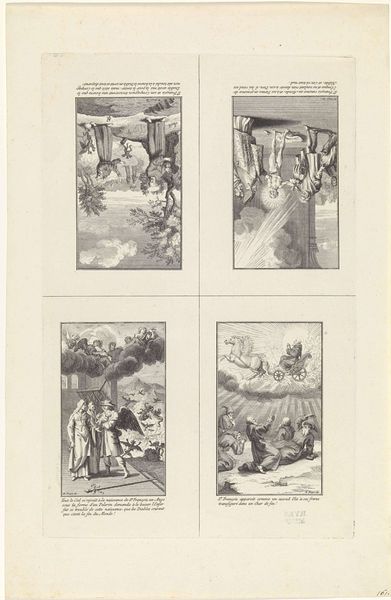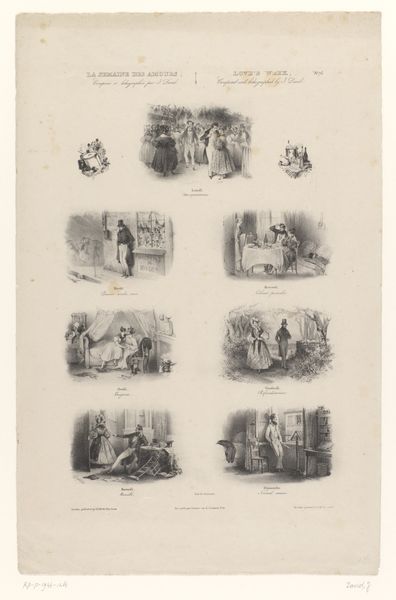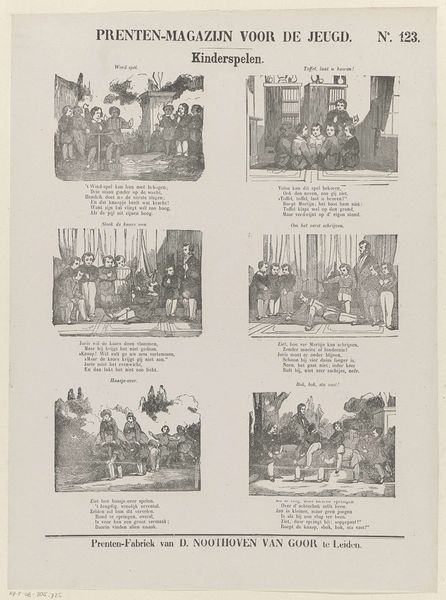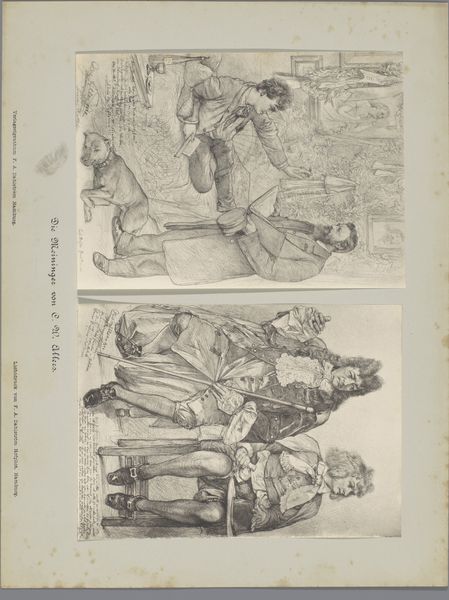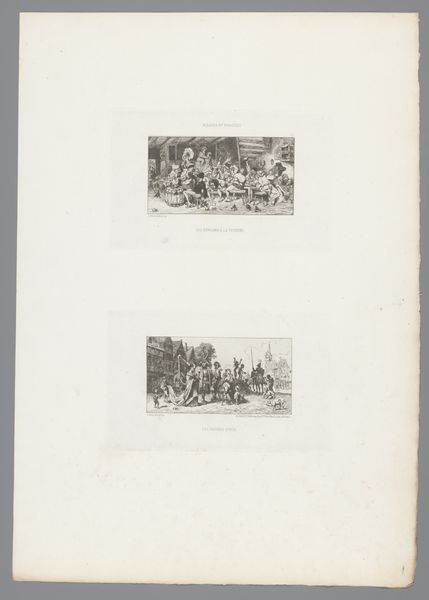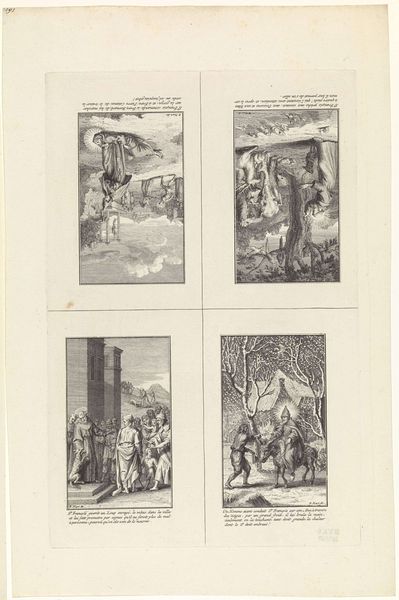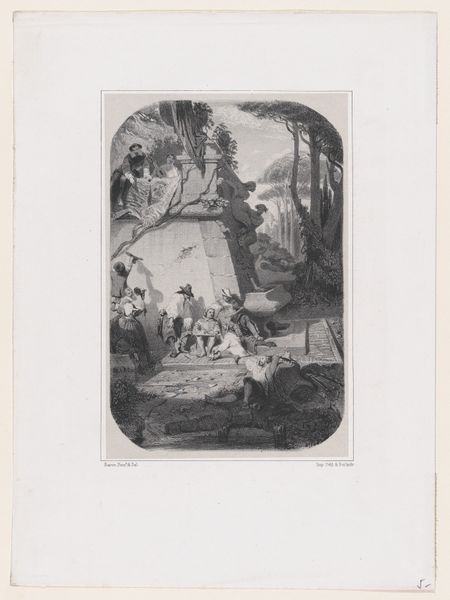
print, engraving
#
narrative-art
# print
#
asian-art
#
engraving
Dimensions: height 427 mm, width 320 mm
Copyright: Rijks Museum: Open Domain
Editor: This is "Tafereelen uit de Heidenwereld," roughly translated to "Scenes from the Heathen World," an engraving made sometime between 1871 and 1908 by J. Johnston. It’s comprised of four distinct vignettes, each with a caption. They’re quite detailed, even within the print medium. What cultural narratives or assumptions are at play here? Curator: This print presents a window into a very specific 19th-century worldview, one that sees the world divided into ‘civilized’ and ‘uncivilized’ spheres. Look closely – what do you notice about the way the people in these scenes are depicted, and the activities they're engaged in? Editor: I notice there seems to be some attempt to show people with distinct cultures and activities such as what appears to be construction, laboring with heavy goods, marching in unison or tending to domestic life, but there is also a detached, observational perspective from the Dutch artist. Curator: Precisely. Consider the title itself. The term "heathen" carries significant religious and cultural baggage. What does it imply about the artist's, and by extension, the intended audience's, position relative to the people depicted? How might that positioning influence the way these scenes were interpreted? The images become part of a larger narrative of European cultural and technological superiority and even duty toward “civilizing” those regarded as different. Editor: So, the cultural memory embedded isn't just about the cultures *in* the images, but about the culture that produced the images. I had originally seen an attempt to show disparate societies in harmony with one another. Curator: Indeed. It's crucial to unpack those layers, to understand the symbols not just for what they seem to represent on the surface, but for what they reveal about the cultural lens through which they were created and viewed. This print is an object worthy of more reflection and interrogation, showing how power and ideology operate. Editor: That's a very thought-provoking point. I hadn’t considered the power dynamic inherent in the act of depiction itself. Thank you.
Comments
No comments
Be the first to comment and join the conversation on the ultimate creative platform.
